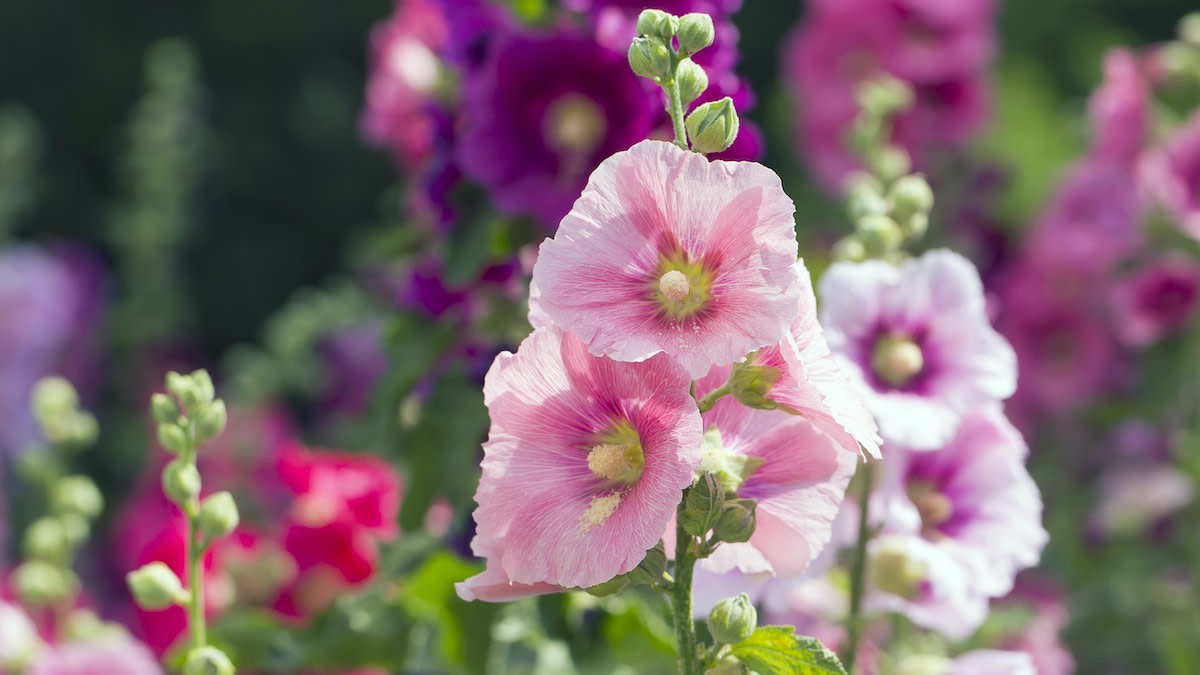How to Grow Hollyhocks in Your Home Flower Garden
Written by MasterClass
Last updated: Jun 7, 2021 • 4 min read
Hollyhocks (Alcea rosea) are ornamental flowering plants that may be either biennial or short-lived perennial with flowers in shades of pink, white, yellow, and red. Not only are hollyhocks easy to grow from seed, but they'll even reseed themselves each year after your initial planting.
Learn From the Best
How to Plant Hollyhock Seeds in 7 Steps
Whether you start hollyhock seeds outdoors or indoors, your plants should flourish as long as you follow these simple steps. The best part about planting hollyhock seeds is that you only need to do it once—hollyhocks self-seed as long as you leave their flower stalks in place.
- 1. Determine your area’s climate. Hollyhocks can grow in USDA hardiness zones three through eight. If you live in a warmer climate, sow seeds outdoors about a week before the last frost in early spring (soil temperature should be at least 50 degrees Fahrenheit). If you're in a colder climate, start your hollyhock seeds indoors about 10 weeks before your last frost and then transplant the seedlings outside a couple of weeks after the last frost.
- 2. Test your soil. Your garden should have well-drained, rich soil with a pH between 6.0 and 8.0. Enhance your soil's nutrients by working in manure or organic compost before planting. If starting your seeds indoors, use a peat-based potting mix consisting of peat moss, perlite, and vermiculite.
- 3. Choose a sunny location. Whether outdoors or indoors hollyhocks thrive best in a full-sun environment, so make sure you have a sunny garden bed. Hollyhocks will manage in partial shade as long as they receive at least six hours of sunlight per day, but the more sunlight they receive, the stronger your hollyhock flower blooms will be.
- 4. Plant your seeds the proper depth and spacing. Sow hollyhock seeds a quarter of an inch deep and six inches apart.
- 5. Water the soil as needed to maintain moistness. To determine if you've watered the proper amount, stick your finger into the soil about an inch deep: If it's moist without being too watery, it's just right. Your hollyhock seeds should begin to germinate in approximately one to two weeks.
- 6. Thin out or transplant your seedlings. If starting seeds outdoors, thin your seedlings by keeping the healthiest ones and spacing them two feet apart. If transplanting seedlings from indoors, transport them along with some soil from their pots, and re-plant, spacing each seedling two feet apart. Make sure to water after thinning or transplanting.
- 7. Evenly spread a layer of organic mulch around each seedling. A two-inch layer of mulch will help suppress weed growth and lock moisture into your soil. You can purchase organic mulch at your local garden center or make it yourself out of grass clippings, shredded leaves, and wood chips.
How to Grow and Care for Hollyhocks
Some hollyhocks are biennials and may not yield flowers their first year, but if you follow this basic care regimen, you’ll have a beautiful flower bloom by at least the second year.
- 1. Keep your soil moist. Water daily for the first few weeks after planting, and regularly after that, keeping the soil is moist but not waterlogged. Once hollyhocks grow to maturity, they become relatively drought-tolerant, so you can then decrease your watering frequency to two to three times per week for the rest of the growing season. Make sure to continue your watering schedule even after your hollyhock flowers are no longer blooming, as the hollyhock's seed pods still require sustenance in order to produce seeds.
- 2. Use fertilizer for a stronger flower bloom. In the spring, apply a light layer of compost to your soil or use a flower fertilizer according to improve your flower bloom.
- 3. Monitor for disease. Hollyhock plants are susceptible to fungal diseases like powdery mildew and hollyhock rust. To prevent these diseases, avoid wetting the leaves when watering and make sure your plants are in a location with good air circulation. If you notice signs of fungus—like yellow spots, rust-colored bumps, or powdery residue—remove the infected leaves immediately and consider spraying your plants with a fungicide.
- 4. Spray away pests. Spider mites, Japanese beetles, thrips, and aphids are some of the insects that might plague your hollyhock plants. To rid your hollyhocks of a pest infestation, spray your plants with an organic pesticide or try mixing your own insecticidal soap spray using two and a half tablespoons of dish soap, two and a half tablespoons of vegetable oil, and one gallon of water.
- 5. Tie tall stalks to a trellis. Taller hollyhock stalks may struggle to stand upright, so consider staking them to the ground or tying them to a trellis or fence. Tie your plants loosely so they continue to grow freely and receive good air circulation.
Learn More
Grow your own food with Ron Finley, the self-described "Gangster Gardener." Get the MasterClass Annual Membership and learn how to cultivate fresh herbs and vegetables, keep your house plants alive, and use compost to make your community - and the world - a better place.
